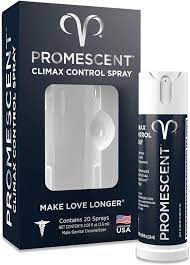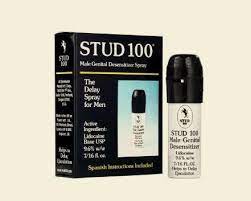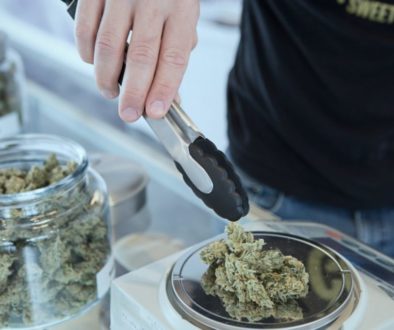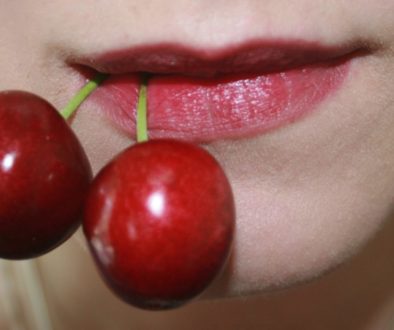Benzocaine vs Lidocaine Which is Stronger?
Based on the results of a recent double blind study, researchers concluded that two percent lidocaine gel is as effective as 20% benzocaine gel in reducing the pain experienced when IVs are placed. Both 2% lidocaine gel and 20% benzocaine gel are more effective than placebo in reducing pain experienced during IV placement.
With so many PE sprays and creams available today, I’ve often wondered why one product uses benzocaine, and another product uses lidocaine. I’ve done some research and probably do even more later as I have discovered it’s fairly complex. But this blog post will give you a basic understanding.
 I’ve looked at many sprays, creams, and gel on the market for premature ejaculation, and the one thing that I’ve noticed is that the cheaper, less popular sprays use benzocaine, and the more expensive sprays use lidocaine. Why is that? What’s the difference between benzocaine and lidocaine? It’s another dilemma in sexual treatment.
I’ve looked at many sprays, creams, and gel on the market for premature ejaculation, and the one thing that I’ve noticed is that the cheaper, less popular sprays use benzocaine, and the more expensive sprays use lidocaine. Why is that? What’s the difference between benzocaine and lidocaine? It’s another dilemma in sexual treatment.
Like most things, it comes down to – you guessed it – MONEY. When making a premature ejaculation spray, you need to follow the FDA monograph 21 CFR 348.10. The very first thing is your choice of active ingredients. Here’s an excerpt from the monograph about your choice of active ingredients:
The active ingredient of the product consists of any of the following within the specified concentration established for each ingredient:
(a) Male genital desensitizers. (1) Benzocaine, 3 to 7.5 percent in a water-soluble base.
(2) Lidocaine in a metered spray with approximately 10 milligrams per spray.
So, with benzocaine, all you need to do is buy benzocaine powder, put it in water or other ingredients that may be used in thousands of skin creams and lotions, at a solution of 3 to 7.5 percent – that’s sounds easy. Turns out it’s easy to buy benzocaine. Just search “benzocaine powder.” You’ll find it on Amazon, eBay, and elsewhere.
You can also find lidocaine powder online, but the monograph requires creating the solution so that it can deliver 10mg of lidocaine per spray. Way more difficult. More development, a special spray bottle, more quality control. Overall more cost.
No surprise that there are more than 50 benzocaine-based PE sprays and creams available on the market.
Why does the FDA Monograph Require Lidocaine to be Delivered in a Metered Dose Bottle?
 Toxicity. Lidocaine is a stronger anesthetic. It starts to become toxic at around 300mg for an average size man. So, using the metered dose bottle, that’s 30 sprays. That’s why the monograph requires the directions to say “maximum 10 sprays”.
Toxicity. Lidocaine is a stronger anesthetic. It starts to become toxic at around 300mg for an average size man. So, using the metered dose bottle, that’s 30 sprays. That’s why the monograph requires the directions to say “maximum 10 sprays”.
Here’s an article from ESBA Laboratories about topical anesthetics that is well written and easy to understand: www.esbalabs.com/how-do-skin-numbing-topical-anesthetics-work.html Here is an excerpt from this article, slightly altered for faster reading.
—
The FDA regulates the concentration and combinations of active principles used in over-the-counter analgesic drug products. These products can be sold without a medical prescription. This information is published in the Code of Federal Regulations, Title 21 (see below).
Combinations of members of the “caine” family are not allowed without a prescription. That is why EMLA cream containing a combination of Lidocaine (2.5%) and Prilocaine (2.5%) is not an OTC preparation in the US. Preparations containing Benzocaine can contain up to 20% of the drug, whereas the maximum concentration of Lidocaine allowed for over-the-counter use on the skin is 4%. This reflects the relative potency of the drugs since benzocaine is less potent and very poorly absorbed even through mucous membranes.
Benzocaine and Lidocaine
Both lidocaine and benzocaine are pretty well-tolerated as local anesthetics.
Benzocaine For Premature Ejaculation
Benzocaine products are safe to use with condoms. The principal use for benzocaine is in the treatment of premature ejaculation, but you know that already. Let’s get to the point. It takes an average of 5 to 7 minutes for a man to reach orgasm and ejaculate, with benzocaine increasing sexual arousal and delaying ejaculation by several minutes, leading to improved performance.
Dosage Forms & Strengths
It takes little as few minutes to take effect, and the numbing effects wear off after about 90 minutes
Gel/topical solution/ Benzocaine Wipes
- 6.3%
- 7.5%
Liquid
- 5%
- 6.3%
- 7.5%
EjectDelay (7.5% gel):
Apply small amount to the penis gland 15-20 min before sexual intercourse
It can be applied with or without a condom
Washed off after intercourse
Other, more effective products are available with the same benzocaine compound like viagra, which is usually prescribed to treat erectile dysfunction by a urologist.
Benzocaine cream is commonly available over the counter. Still, like other over-the-counter products, it does have a laundry list of potential side effects like an allergic reaction, contact with the eye, and a rash which can be debilitating and painful. It is not recommended to use benzocaine cream for the treatment of male infertility.
Benzocaine is also not effective in reducing the irritation associated with male condoms and the foreskin.
Benzocaine cream is recommended to treat premature ejaculation in male patients for a brief period of time of between 1 and 4 weeks. During this time period, the dosage of benzocaine is increased by 50% to 600 mg/day. Since benzocaine is a local anesthetic, it could be applied to the neck, face, genitals, inner thighs and buttocks.
By decreasing premature ejaculation, the urge to have sexual intercourse can be decreased and there is less likelihood of excessive ejaculation.
Lidocaine For Premature Ejaculation
Dr. Ronald Gilbert, a urologist in Newport Beach, California, is the Chief Medical Officer of a company that makes a lidocaine spray used in situations like these. Gilbert personally sees it beyond that first-line therapy for premature ejaculation.
Local use of lidocaine 5% spray on glans penis 10–20 min prior to sexual intercourse could significantly improve PE patients, with tolerated local adverse effects.
The concept isn’t new, and these lidocaine sprays have received a thoroughly mixed bag of reviews. That may be because they don’t address the psychological component of the problem (which, some argue, is the only component). But Gilbert believes that his formula, called Promescent, works. He told me about it in flowing jargon involving binary eutectic, a pKa near the pH of lidocaine, and a two-phase meld system that drives lidocaine through the stratum corneum of the skin of the penis.
Many men think that a dab of lube and some pressure can help them get an erection but this is a fallacy. Some guys use lube and they are erect. They do this on purpose and that’s because they really don’t want to get off.
When the pressure from the finger pressure causes blood vessels to constrict in the penis, then erections become a possibility. But in my opinion, if you want an erection to happen, you need to do more than just take off the tip of the finger.
You need to apply pressure at a specific place. A finger must be placed on the outer area of the penis, and the pressure must be constant for a sustained period of time.
This might sound like a difficult exercise to perform, but with some practice and exercise, you can master this. In fact, you can get better at it as you progress.
I know how it sounds to you, but it works. Please try it with your partner to see. Please do not do it in the bedroom for someone else. Try it in a place where you don’t have to be too harsh or rough with your partner. Try it in the bathroom if the bedroom is full of gadgets and you don’t have too much time to perform the exercise.
Once you find the right spot, you must repeat the exercise for a minimum of 30 seconds. Repeat this for at least 2-3 sessions in a week. After 3 weeks of diligent practice, you should notice that your sex life will definitely improve and you will enjoy sex more than you do now.
[rev_slider alias=”benzocaine-vs-lidocaine-which-is-stronger”]
—
FDA Monograph 21 CFR Part 348
https://www.accessdata.fda.gov/scripts/cdrh/cfdocs/cfcfr/CFRSearch.cfm?fr=348.10



